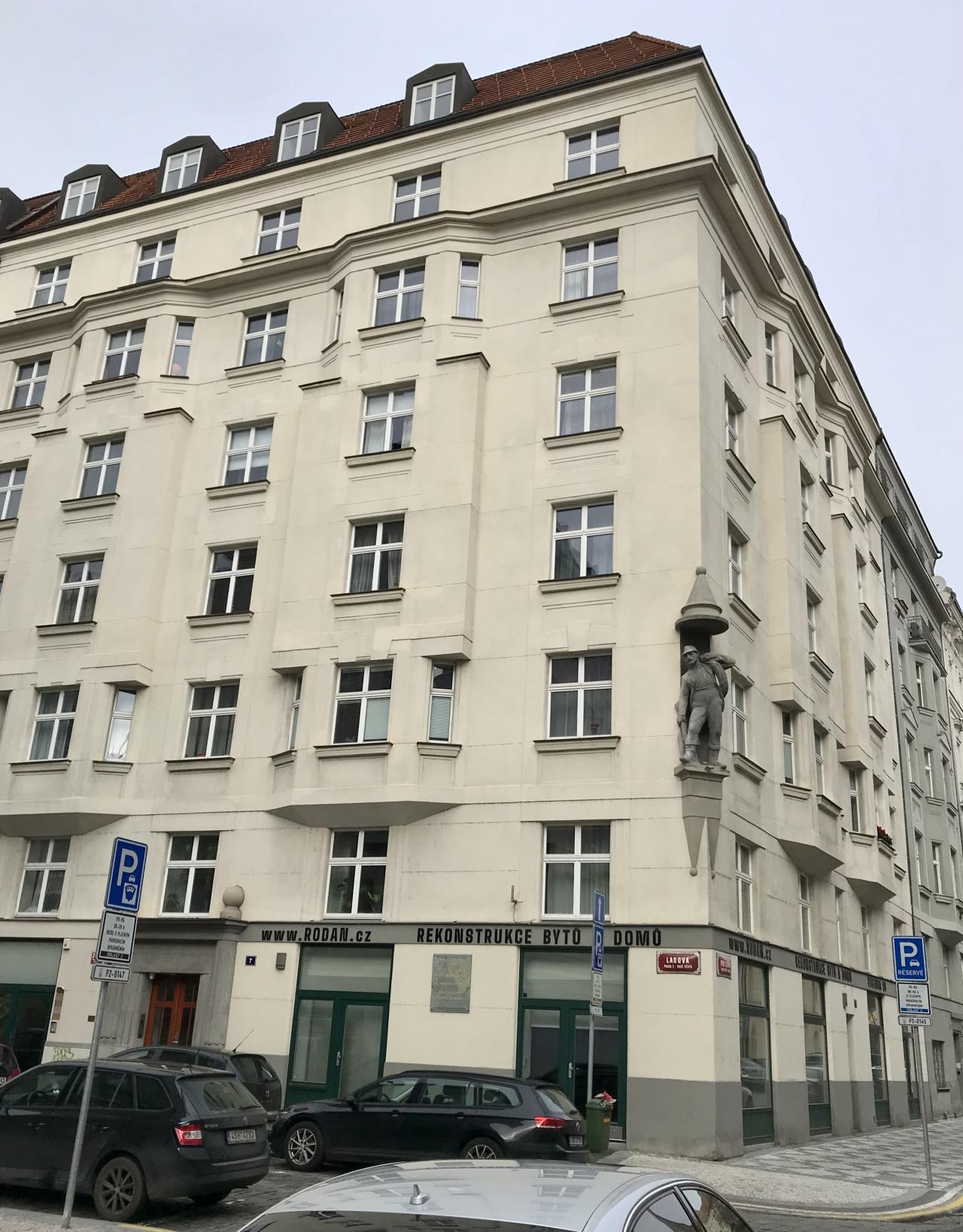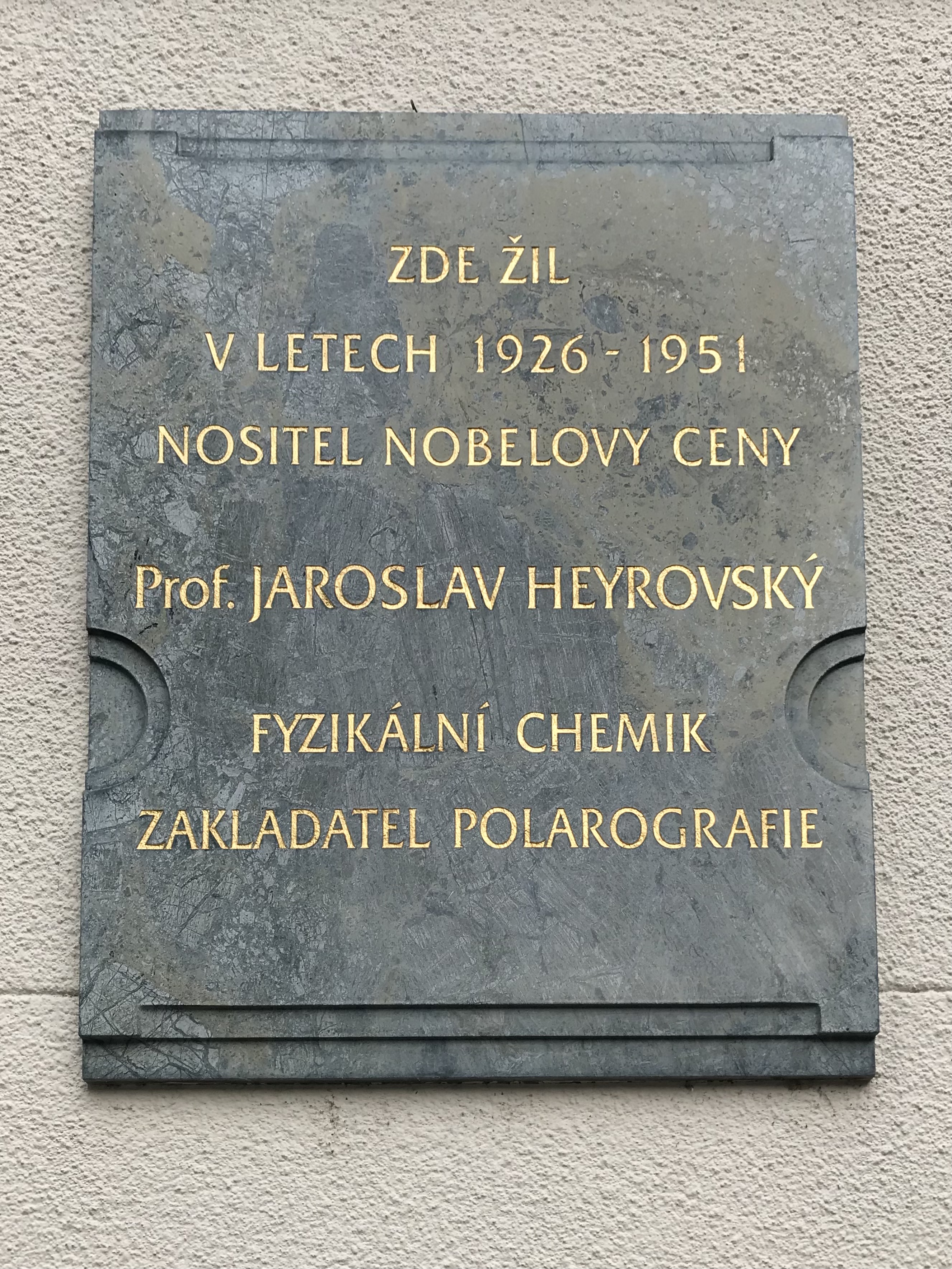The marble memorial plaque in Prague's Ladova St., situated to the right of the entrance to the apartment building, bears a gilded inscription:
HERE LIVED / IN 1926 – 1951 / THE NOBEL PRIZE WINNER / PROF. JAROSLAV HEYROVSKY / PHYSICAL CHEMIST / FOUNDER OF POLAROGRAPHY
The discovery of polarography in 1922 completely changed the existing science. Heyrovsky was the first in the world to realize that a chemical reaction is expressible by an electric current. The electrochemical analytical method itself is used to determine the presence and concentration of unknown substances in solution. The method began to be used in various industries to determine the composition of raw materials or products. The Heyrovsky method is now being followed by other more advanced methods that can, for example, analyse drugs and their effects, DNA damage or help detect the negative effects of a range of substances on the environment.
The year 1926 brought Heyrovsky a series of events that affected both his scientific career and his personal life. At that time, he had already been in charge of the Institute of Physical Chemistry at the Faculty of Science of Charles University in Albertov for several years. In May of that year he became a full professor of physical chemistry and completed a six-month internship at the Sorbonne in Paris. And in February 1926 he married.
Heyrovský had lived at this address since his marriage to Marie Kořánová, whom he met while doing his military service in Tábor during the First World War. The Kořán family and the Heyrovský family were distantly related. Heyrovský's future wife studied French at the Faculty of Arts of Charles University from 1922. After the birth of her daughter Jitka in 1929, however, she finished her studies and became a lifelong collaborator of her husband. She worked as his secretary and in the first decades she was unpaid. Their daughter Jitka Černá Heyrovská (1929-2016) studied chemistry at the Faculty of Science of Charles University and worked as a biochemist at the Food Research Institute. Their son Michael Heyrovský (1932-2017) also studied chemistry, first at the Faculty of Mathematics and Physics of Charles University, then at Cambridge. His entire later career was spent at the Institute of Physical Chemistry of the Academy of Sciences (formerly the Institute of Polarography), named after his father.
In 1982, the asteroid 3069 was named after Prof. Heyrovsky and in 1985 one of the craters on the far side of the Moon was named after him. The name of the founder of polarography is also borne by a Prague high school in Stodůlky or the Secondary Industrial School of Chemistry in Ostrava. The Jaroslav Heyrovský Endowment Fund was established in 1993 to support gifted high school students and to promote the legacy of the first and still most famous Czech Nobel Prize winner.
Kvítek, M.: Průkopníci vědy a techniky v českých zemích. Praha, 1994, s. 52–53.
Benešová, O.: Nobelova cena. Historie Nobelovy nadace: laureáti Nobelovy ceny 1901–1996. Praha 1996, s. 36.
Koryta, J.: Jaroslav Heyrovský, Praha 1990.
[20. 6. 2022].









